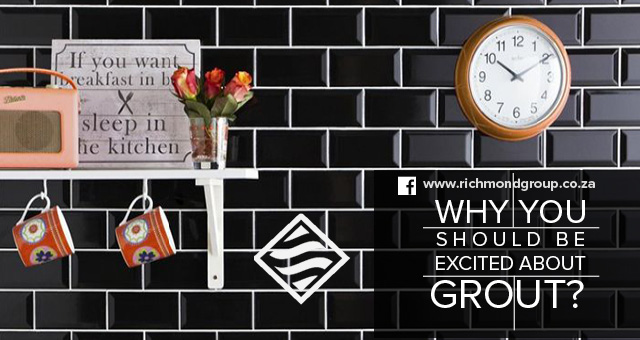If you’ve ever been involved in a renovation project, you’ve likely spent hours agonising over your choice of taps, basins or tiles. You know what look you are going for, but you need to make sure that the individual elements will work.
The one factor that seems to be neglected in terms of design, is the effect that your choice of grout will have on the overall look and feel of a room. Grout is an essential and exciting part of the tiling process. Not only is it the filler between tiles – keeping out water and holding things in place – but it’s an important design element which can quickly change up your style.
Take a look at these 5 points which can make the world of difference to your kitchen or bathroom tiling project when it’s time to grout.
#1 Do you need to grout?
Some wall tiles, such as riverstone, are impossible to grout. Their rough, organic faces can be sealed for easy cleaning, but grouting would turn into someone’s version of a nightmare. It’s safe to say, though, that floor tiles and flat faced wall tiles (especially in wet areas) need to be grouted.
#2 What sort of grout should I use?
Cement-based grout is the cheapest and most commonly used. Epoxy grouts are a little more expensive and difficult to use, but they are more durable. Do some homework and make sure that your actual product is right for the space, and then consider the colour.
#3 “Matching” grout lines.
If you are looking for a seamless look, then match your grout colour with your tiles. This will trick the eye into minimising the spaces between the tiles and give a fluid, unified feel. This is a great option when the tiles are a single colour, when you can achieve a bank of solid colour.
#4 “Contrasting” grout lines.
If you want to make your tile choice really stand out, then select a contrasting colour. For example, white with black tiles or black grout with white tiles. A thicker grout line will also highlight your tile selection. Bold colour choices and large tiles can really bring a room to life.
#5 “Neutral” grout lines.
For investment properties, resales – or any project that is designed for mass appeal – then neutral grout is the way to go. This neutral choice would be tan, beige or grey and merge quietly into your tile choice. This gives a softer look to the room, and is gentle on the eye.
The great thing about grout is that it’s not forever. If you don’t like it – then change it. It’s a relatively quick and cost-effective way to change the whole feel of a bathroom or kitchen. Happy renovating!

